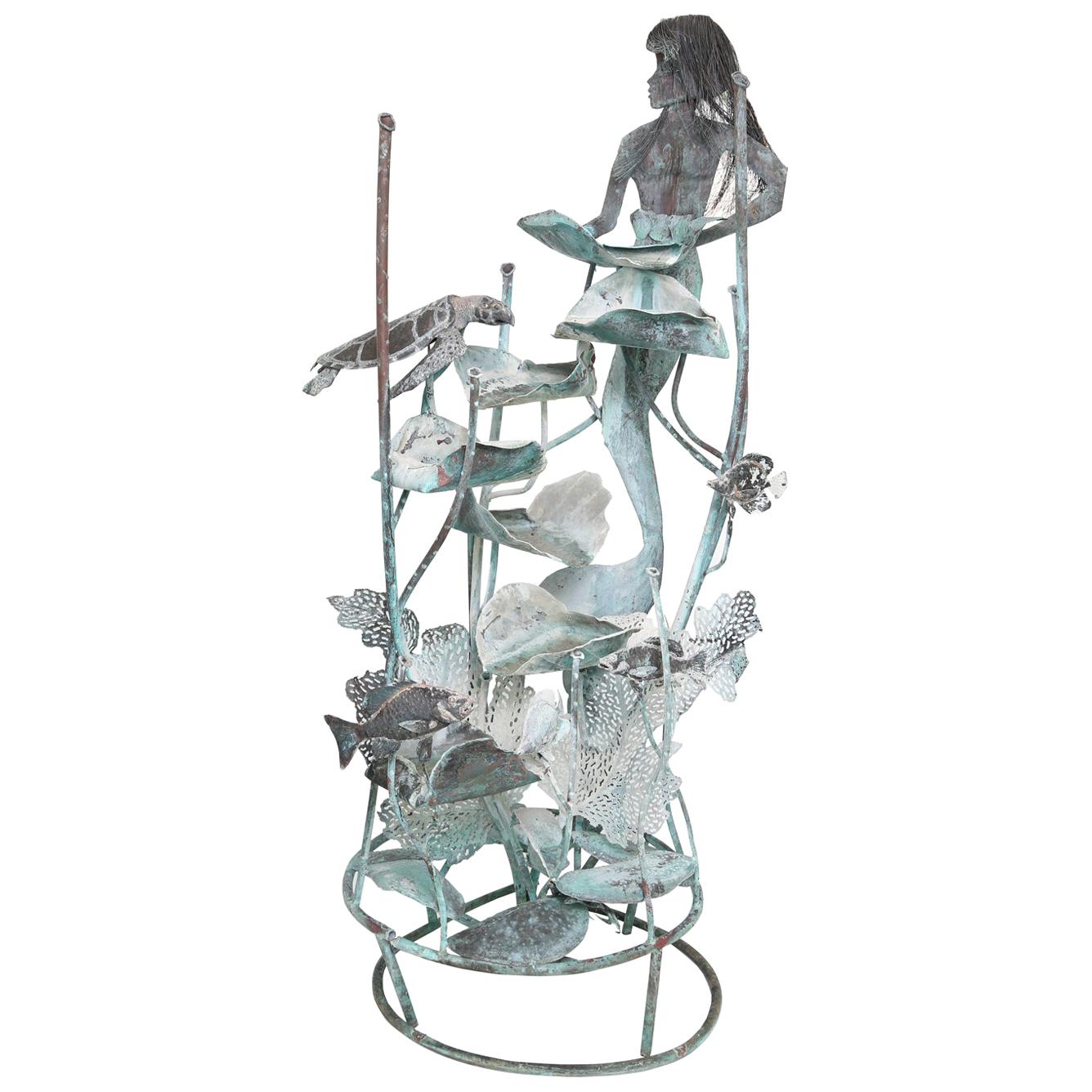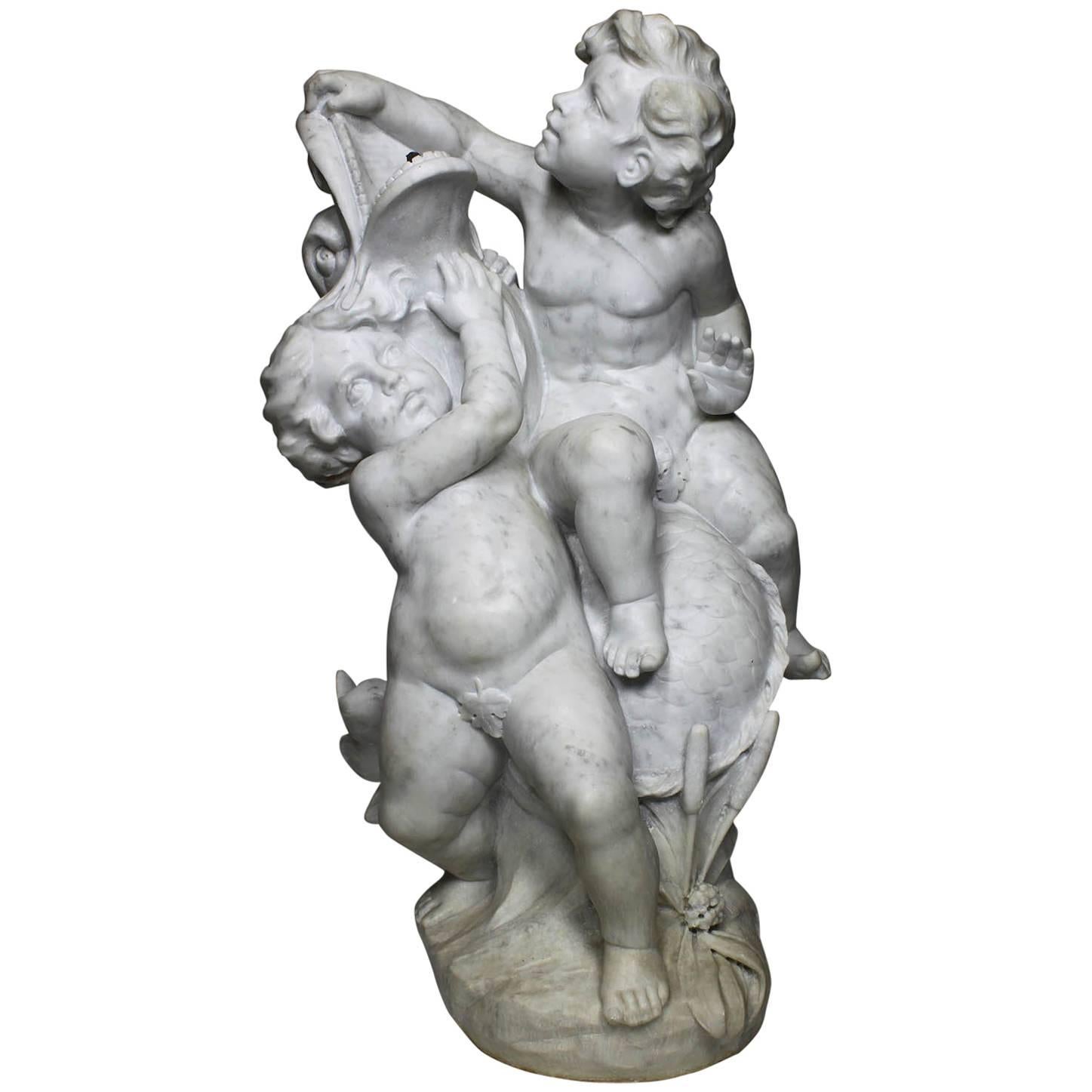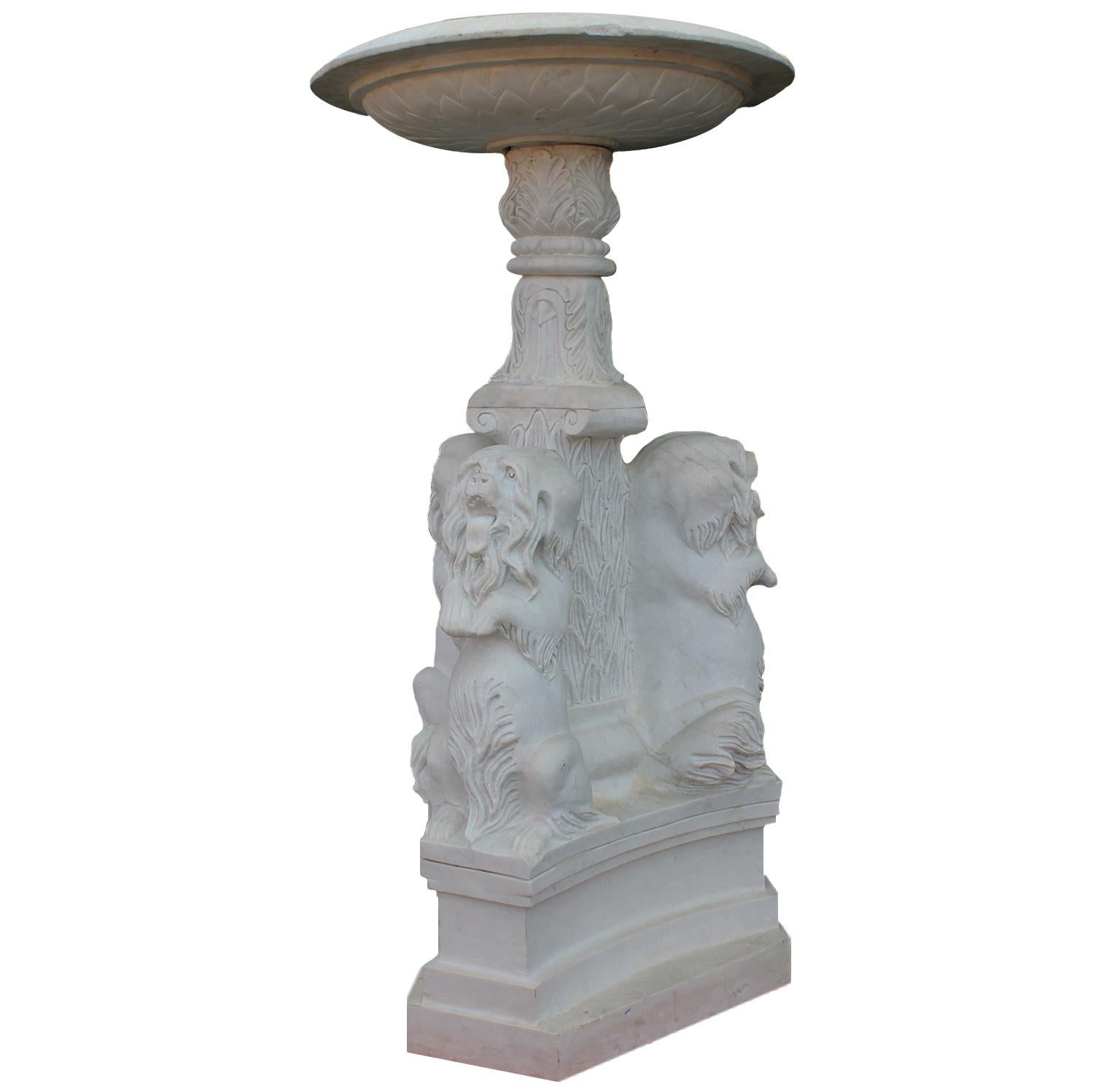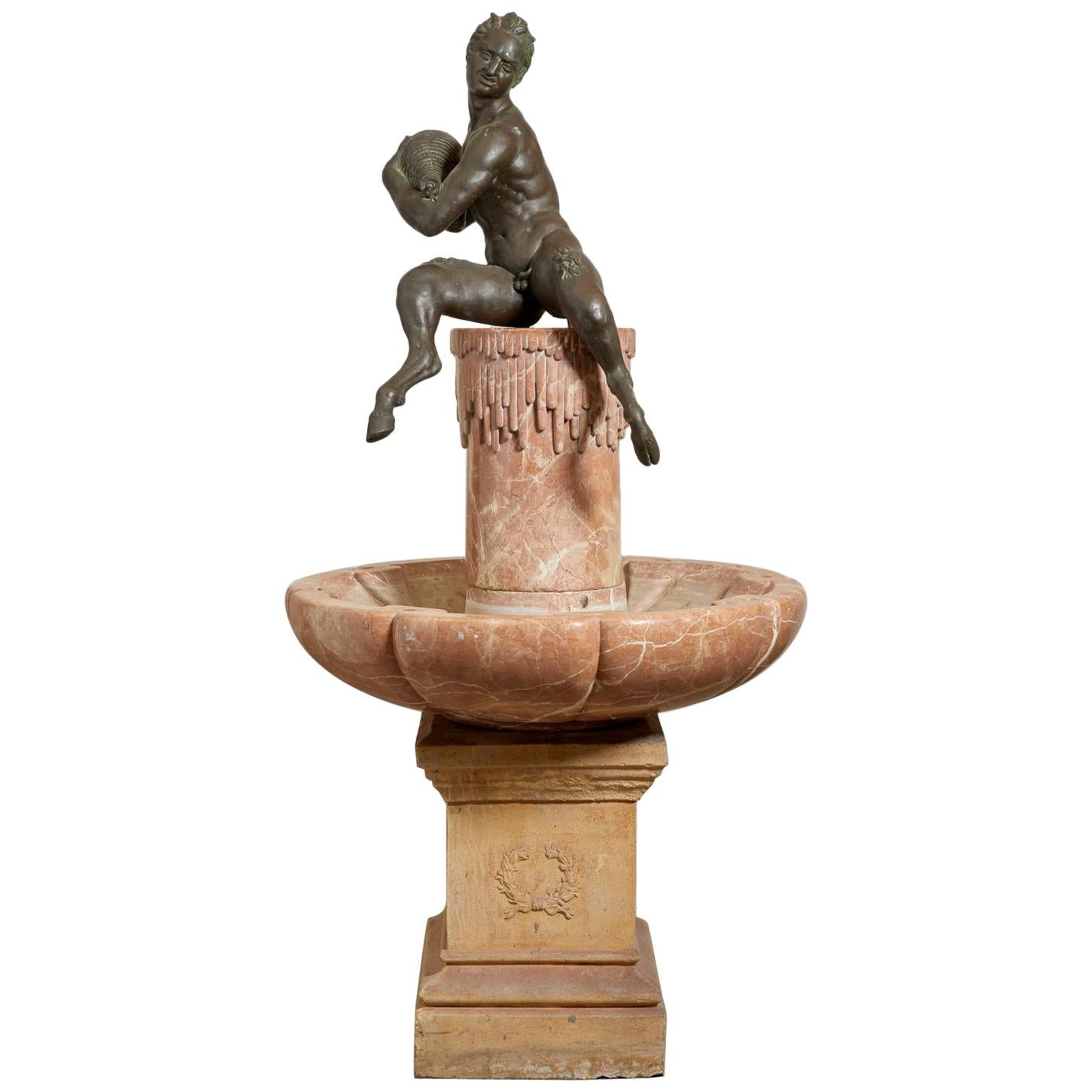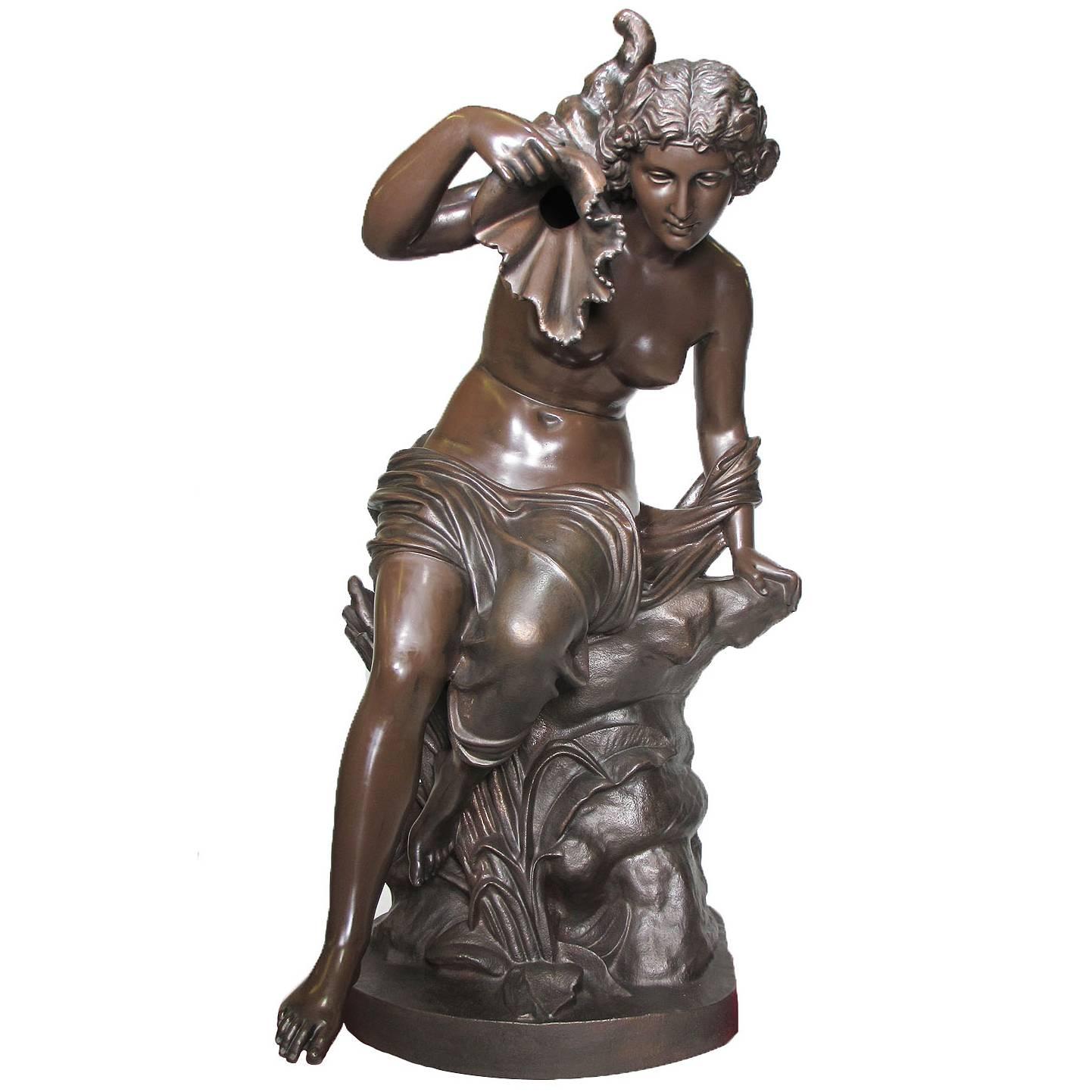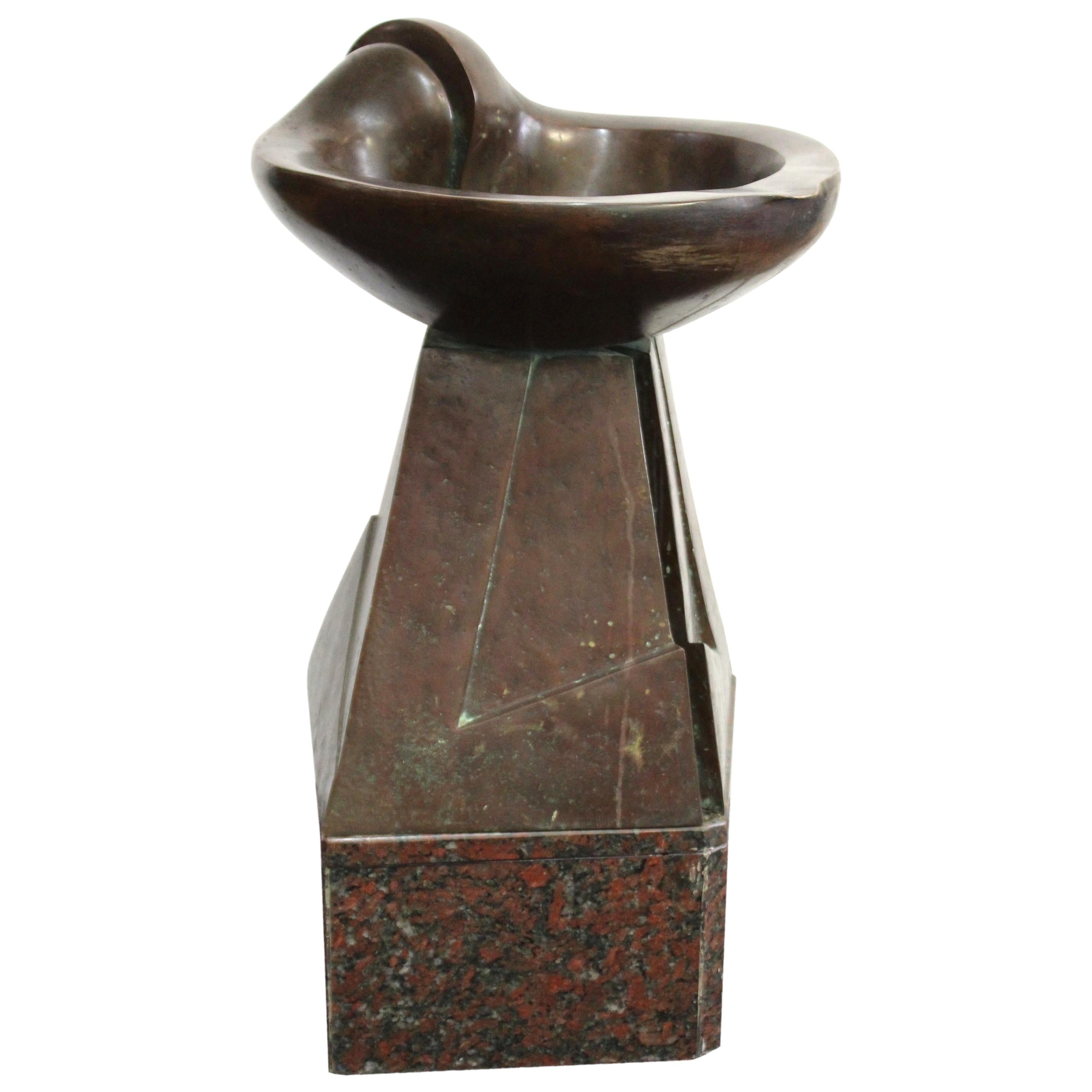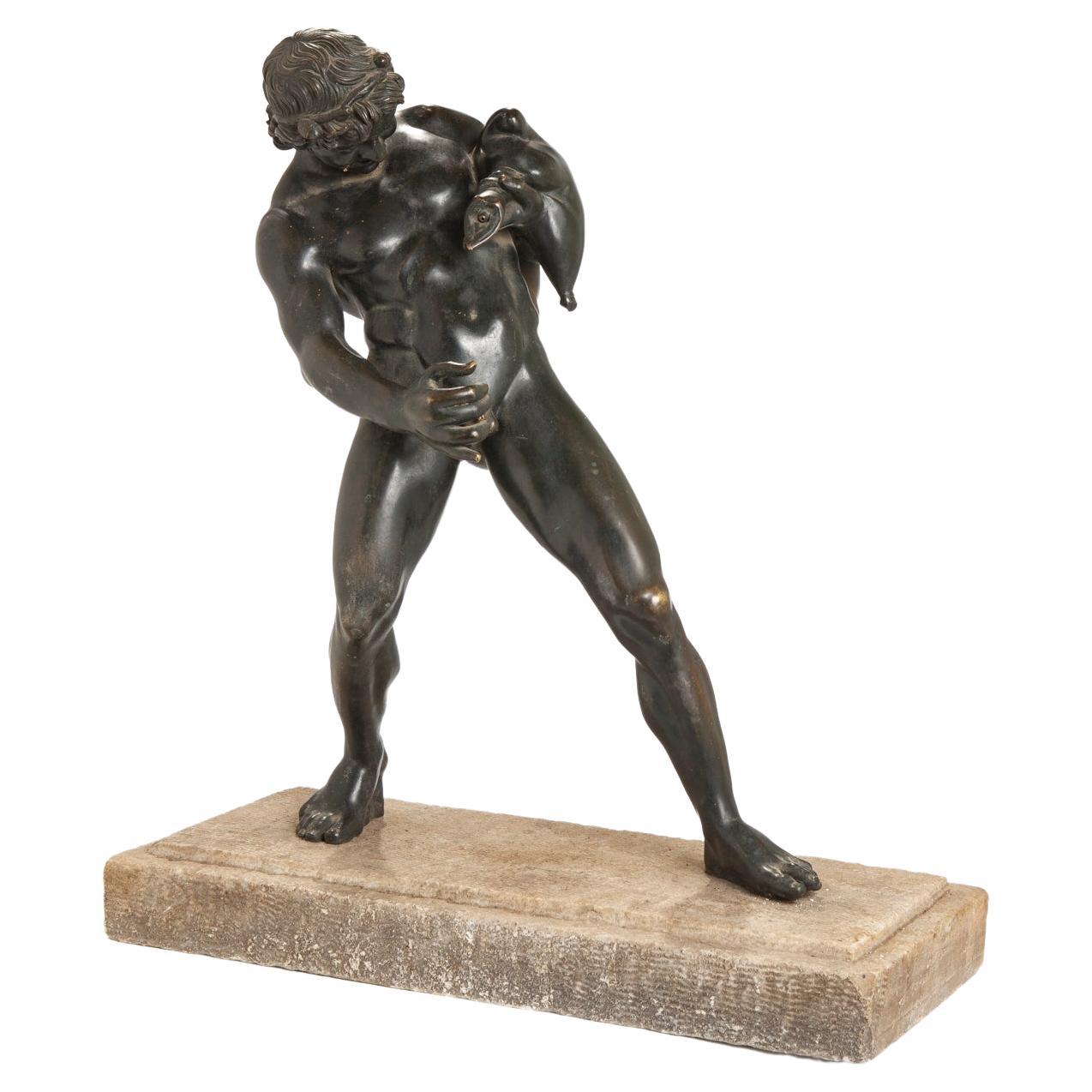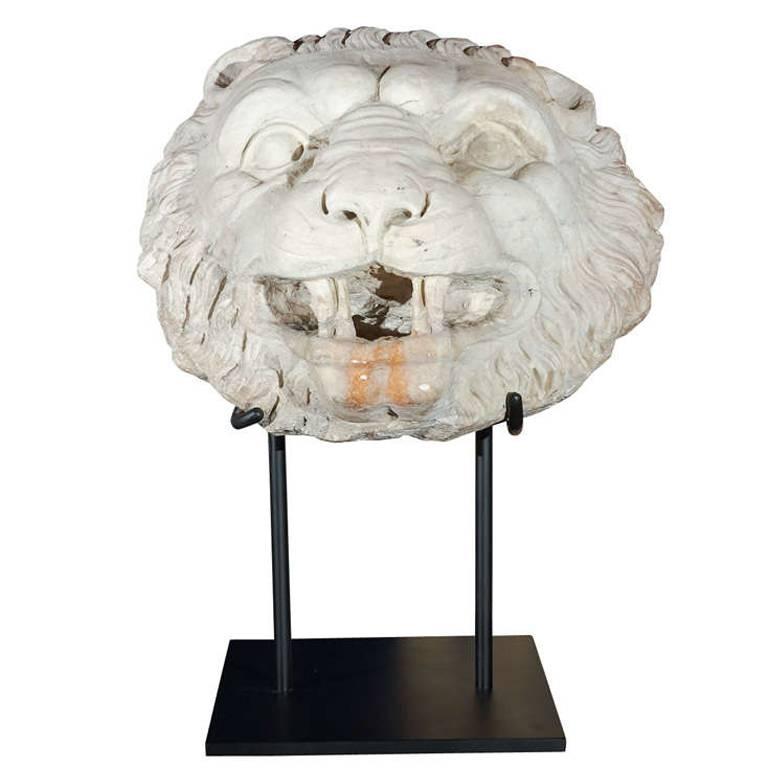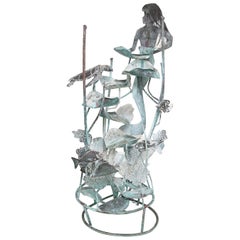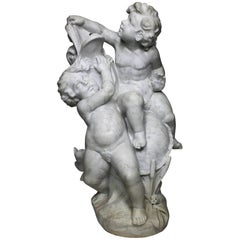
Fountain of Bronze Mermaid Seated on Tortoise, 20th Century
View Similar Items
1 of 18
Fountain of Bronze Mermaid Seated on Tortoise, 20th Century
About the Item
- Dimensions:Height: 28.35 in (72 cm)Width: 21.66 in (55 cm)Depth: 24.41 in (62 cm)
- Materials and Techniques:Bronze,Cast
- Place of Origin:
- Period:
- Date of Manufacture:20th Century
- Condition:Wear consistent with age and use.
- Seller Location:London, GB
- Reference Number:1stDibs: LU3652317721491
You May Also Like
- 20th Century Italian Stone Fountain MaskLocated in Milan, ITThis antique stone mask was probably used in a fountain. It is a very decorative Italian antique object. The mask fits as decorative object on a bureau o...Category
Early 20th Century European Classical Roman Animal Sculptures
MaterialsStone
- Copper Mermaid Fountain by Glen MayoBy Glen MayoLocated in West Palm Beach, FLWhimsical fountain sculpture, of copper, by metal artist Glen Mayo; its mermaid focal point holding a leaf which cascades water down the fountain, among turtles, angel fish, other se...Category
1990s North American Fountains
MaterialsCopper
- A French 19th-20th Century Carved White Marble Fountain Sculpture with ChildrenLocated in Los Angeles, CAA fine and charming French 19th-20th century carved white marble whimsical group sculpture depicting two putti (Children) playing with a dolphin, fitted for use as a fountain, Paris,...Category
Antique Early 1900s French Louis XV Fountains
MaterialsMarble
$9,450 Sale Price24% Off - Whimsical English 19th-20th Century White Marble Figural Outdoor Dog FountainLocated in Los Angeles, CAA Whimsical English 19th-20th century white marble figural fountain with dogs fountain. The Baroque Revival six-sided tripod marble base surmounted with three upright seated Yorkshire Terriers resting on a leaf and acanthus center stem, topped with a semi-circular scalloped carved basin...Category
Antique Early 1900s English Baroque Revival Fountains
MaterialsMarble
$9,850 Sale Price33% Off - 19th Century French Marble and Bronze FountainLocated in Essex, MA19th century French marble and bronze fountain. Seated satyr on marble column with marble shell basin. Later cast stone plinth. Wonderful garden ele...Category
Antique Late 19th Century French Louis XV Figurative Sculptures
MaterialsMarble, Bronze
- Large French 19th Century Cast-Iron Fountain Figure of a Seated Nude MaidenBy J.J. Ducel Me de Forges 1Located in Los Angeles, CAA Fine and Large French 19th Century Cast-Iron Fountain Figure Modeled as a Nude Maiden Seated on a Rocky Outcrop Holding a Cornucopia in Her Raised Right Hand, by J.J Ducel. Cast-Signed "J.J. DUCEL Me de FORGES, PARIS". Circa: Paris, 1880. A retailer of fine cast-iron ornaments, J. J. Ducel was recorded as supplying cast-iron works through Paris as early as 1810 in the Pas-de-Calais. The factory was sold in 1878 to the Fonderie de la Haute-Marne and all of the firm's models were subsequently bought by the Val d'Osne foundry. However, prior to the firm's sale, critics at the 1867 Paris Exposition Universelle proclaimed that "Ducel is the great manufacturer of works in cast-iron, to whom Paris is so largely indebted for the grace and elegance that supply so many of the adornments of its streets". Ducel, Val d'Osne and other associated foundries produced both bronze and cast-iron statuary. Cast-iron is corrosive, whereas non-ferrous bronze does not suffer the same detrimental effects of weathering and is therefore a superior and more expensive material. Height: 51 1/2 inches (130.8 cm) Width: 22 inches (55.9 cm) Depth: 30 inches (76.2 cm) The foundry of Val d'Osne became highly regarded for the varied nature and quality of its castings in the second half of the 19th century. Commonly known after 1870 as simply Val D'Osne, the company was originally founded by J.P.V. André in Val d'Osne 1835 and developed rapidly, absorbing smaller foundries in the Haute-Marne area east of Paris. The foundry contributed to the London International Exhibition of 1851, where a bronze fountain cast with classical figures attracted much attention. André also specialised in fancy castings and architectural fittings. His Paris adress was at 14 Rue Neuve, Menilmontant. In 1855 the Barbezat & Cie Foundry was born out of the André workshop. In 1867 Barbezat & Cie changed its name to Houille & Cie. Then, in 1870, it changed its name to Société Anonyme du Val d'Osne. With the change of name came the change of casting mark and adress: Fonderies d'Art du Val d'Osne, 58 Bd Voltaire, Paris or simply Val d'Osne. Cast-iron had been in production during the 18th century but its inferior status to the more fashionable and delicate wrought-iron had generally confined its use to architectural work. By the early 19th century, however, rapid developments of the Industrial Revolution combined with the simultaneous burgeoning of a new middle class provided the impetus for a dramatic expansion in its application and in a short space of time a proliferation of iron foundries across Europe and America thrived on the production of everything from inkstands to railway stations. The use of cast-iron for garden ornament became particularly widespread at this time, as the possibilities for its mass-production at a fraction of the cost of bronze made it the material of choice for indoor/outdoor statuary...Category
Antique 19th Century French Classical Greek Figurative Sculptures
MaterialsIron
$24,850 Sale Price44% Off

